Imagine standing on stage, your fingers coaxing melodies from your guitar, as a 2×10 guitar cabinet propels your sound to every corner of the room. This moment signals a profound shift in your musical journey. Yet, why is the 2×10 configuration so transformative? Many dismiss it as merely a step down from larger cabinets, but seasoned players know it has its own magic. This guide reveals why the 2×10 guitar speaker cabinet might just be the missing piece in your musical puzzle.
As a luthier with decades of experience, I’ve learned that the right cabinet can dramatically enhance your tone—much like choosing the right strings or wood. *The pursuit of that perfect sound* begins with understanding your instruments, and a deep dive into the world of 2×10 cabinets is crucial. From options available on the market to insights on creating your own, this guide equips you with everything you need to make an informed choice.
What is a 2×10 Guitar Cabinet?
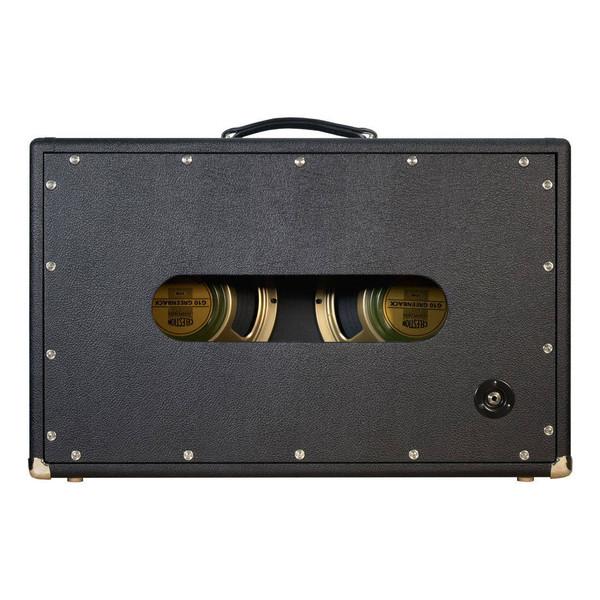
Did you know that the configuration of speakers in your cabinet can alter your musical expression? This is a topic close to my heart as I explore the science of sound. A 2×10 guitar cabinet might seem like just another piece of equipment to the uninitiated, but it represents an intersection of art and engineering that is fundamental to any guitarist’s journey. At its core, a 2×10 guitar cabinet houses two 10-inch guitar speakers within a singular enclosure. This configuration gives it a distinct voice and a unique ability to shape your tone, offering a balance between portability and sound quality that many guitarists find ideal.
Unlike a singular speaker cabinet, which might provide a narrow tonal range, the 2×10’s dual speakers often offer a richer, more complex audio profile. This setup allows for greater dynamic range and flexibility when paired with a guitar amp cabinet. The design is beloved for its ability to blend defined mids with clear highs, providing an articulate sound that doesn’t muddle in live or studio settings. In my own experience, playing through a 2×10 has broadened my sonic palette, creating possibilities and tones I hadn’t previously considered. Understanding this basic structure is not just about technical specification; it’s about unleashing creativity and finding your unique sound signature.
Why Choose a 2×10 Guitar Cabinet?
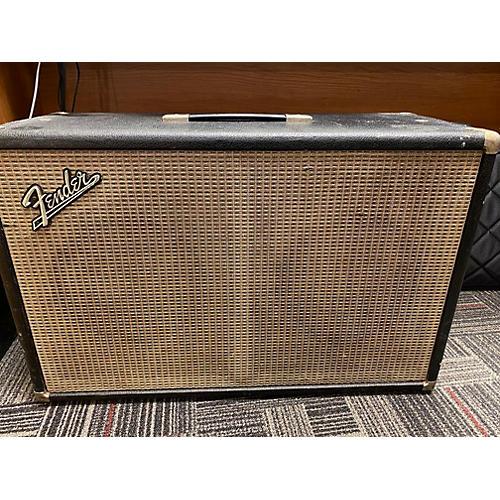
What if I told you that a compact setup could be the secret to achieving *professional-level guitar tone*? In my experience, the 2×10 cabinet is an exemplary solution for musicians who seek a *balance of portability and sound quality*. When you’re on the gigging scene, lugging around cumbersome gear can be a real hassle. That’s where the *best 2×10 cabinet* steps in, offering a seamless blend of *lightweight design and robust performance*.
One of the compelling benefits of a 2×10 cabinet is how it addresses the needs of traveling musicians like myself. I’ve found that these cabinets not only cut down on setup time but also ensure that my tone remains clear and punchy across different venues. The dual 10-inch speakers within the compact configuration deliver a surprisingly full-bodied sound that is both articulate in the high end and rich in the lower frequencies. This is crucial when maintaining consistency in your *guitar tone* while moving from studio to stage.
Beyond the practical aspect, there’s an undeniable satisfaction in positioning a 2×10 cabinet on a tight stage setup and knowing that I’m not sacrificing quality for space. Whether you’re playing small to medium-sized venues or recording in a home studio, the 2×10 cabinet proves its versatility and capability time and again, making it a valued addition to any musician’s gear arsenal.
Who Should Use a 2×10 Guitar Cabinet?
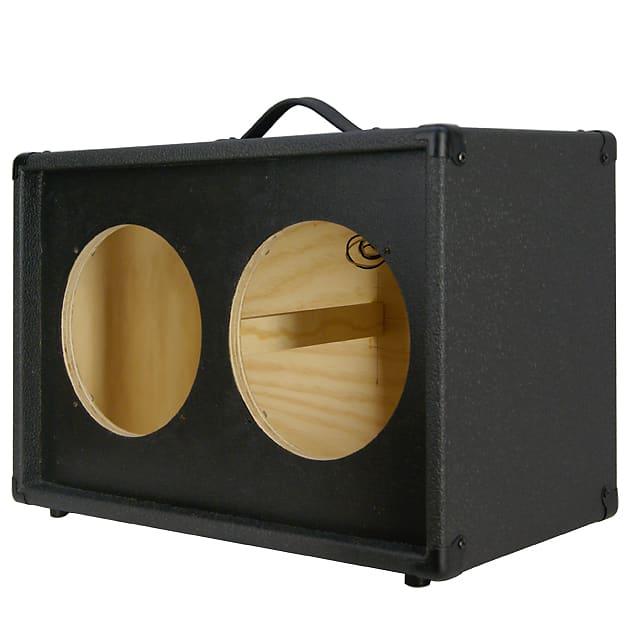
Are you a guitarist who travels often? Your choice in cabinets could redefine your playing experience. Traveling musicians, in my experience, often look for that sweet spot where sound quality meets weight and portability. Over the years, in conversations with countless passionate players, I’ve discovered that many are steered towards 2×10 guitar cabinets. These setups are perfect for those who need to strike a balance between performance and ease of transport.
One standout characteristic of the 2×10 is its compact nature. If you’ve ever found yourself wrestling with bulky gear through cramped backstage corridors, you’ll appreciate how these cabinets can offer substantial sound without the accompanying back strain. The 2×10 guitar cabinets are ideal for musicians who perform at various venues—whether it’s local gigs or open mic nights at new, undiscovered spots. The convenience of carrying a lighter rig often means more energy for playing and less for lugging equipment.
A 2×10 configuration isn’t limited by its size—it packs punch while enhancing sound diffusion, a fact not lost on gigging professionals seeking clarity and presence. For those who crave the perfect stage companion that doesn’t demand compromising on tone, these cabinets are indeed a noteworthy choice. Whether your tour van is packed tight or your home studio simply lacks space, making the leap to a 2×10 could transform your musical journey into one of sound liberation and logistical ease. For those still unsure whether this setup meets their needs, this guide will illuminate how and where to find and optimize the right 2×10 chassis for you.
Where to Purchase a 2×10 Guitar Cabinet
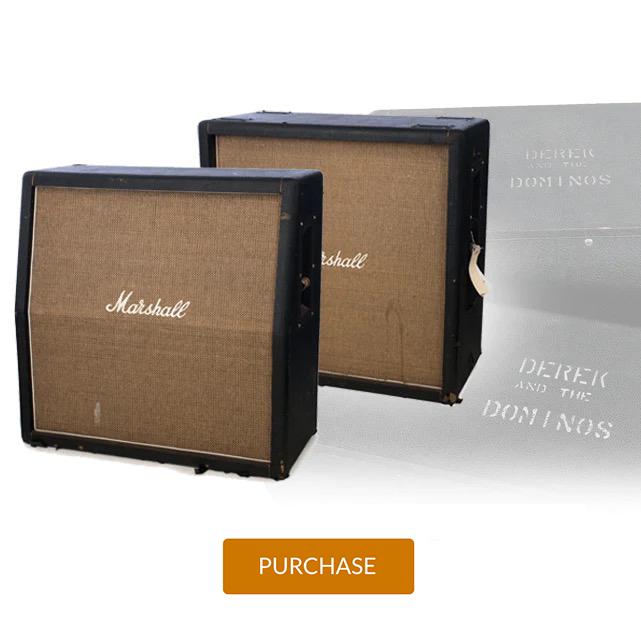
As a musician who’s always on the hunt for the best gear, I’ve scoured countless stores and online platforms to find standout components that not only elevate the sound but also inspire creativity. This leads us to a critical question: What if the best 2×10 cabinet isn’t where you’d expect it to be? It’s a thrilling proposition that ignites the avid gear-seeker within us all. For years, my search for the best 2×10 guitar cabinets has taken me beyond the predictable paths of mainstream retail.
Key players like Guitar Center and Sweetwater offer an impressive array of options—and they’re undoubtedly worth exploring—but sometimes the true hidden gems lie elsewhere. I’ve found remarkable 2×10 cabinets on Reverb, where independent luthiers and boutique brands showcase unique creations not found anywhere else. **Understanding where to search can be pivotal**; while big stores guarantee a standard selection, platforms like Reverb or eBay provide access to one-of-a-kind, quality finds.
Speaking from personal experience, it’s also essential to visit local music stores, where you can stumble upon rare pieces with rich histories and unparalleled character. These visits often reveal cabinets that carry stories in their wood and wiring, waiting to deliver resonant performances at the next gig. By branching out and embracing the treasure hunt perspective, you might just uncover the best 2×10 cabinet—enhancing not only your sound but your musical journey as well.
When to Use a 2×10 Guitar Cabinet

Throughout my career as an engineer, I’ve realized that choosing the right cabinet for the situation isn’t just about sound quality—it can profoundly impact the overall performance. You wouldn’t believe how the speaker configuration can change the game. Can the configuration of your cabinet make a difference in live versus studio settings? Absolutely. The 2×10 guitar cabinet has its sweet spot in specific scenarios, where it can shine like no other setup.
In a live setting, a 2×10 becomes invaluable when you seek a balance between portability and broad coverage. Its size allows for easy transport and stage placement, while the dual 10-inch speakers offer a tight, punchy response that can cut through the mix beautifully. Whether it’s a ported vs sealed cabinet, each has unique characteristics suited to different applications. Ported cabinets excel outdoors or in larger venues, providing an extended low-end punch. Meanwhile, a sealed cabinet thrives in smaller venues, delivering a more focused and articulate sound.
In studio sessions, a 2×10 cabinet’s unique character comes into play when you desire clarity and precise tonality, enabling you to capture nuanced performances. The smaller speaker size often results in quicker transient response, perfect for genres requiring fast articulation. My firsthand experiences have taught me that this configuration can be a recording engineer’s secret weapon, allowing for flexibility in mic positioning and sound manipulation.
How to Build a DIY 2×10 Guitar Cabinet
Materials Needed

Embarking on the journey to build your own 2×10 guitar speaker cabinet starts with gathering the right materials. Through my hands-on experience, I’ve gleaned that the choice of wood significantly influences the cabinet’s tone and durability. Commonly, birch plywood is favored for its balance between cost and tonal transparency. However, pine offers a warmer resonance, which could be preferable if you’re after a vintage sound. Structural integrity is equally vital, so ensure you select sturdy 8-10 ply wood.
Beyond wood types, you’ll need acoustic insulation to manage internal sound waves, handles for portability, and Tolex for a professional finish. Don’t forget wiring essentials, speaker connectors, and quality metal corners to protect your investment. As we transition to the Step-by-Step Construction Process, keep these materials at hand; they are the foundation of realizing a cabinet that not only looks professional but also performs exceptionally.
Step-by-Step Construction Process
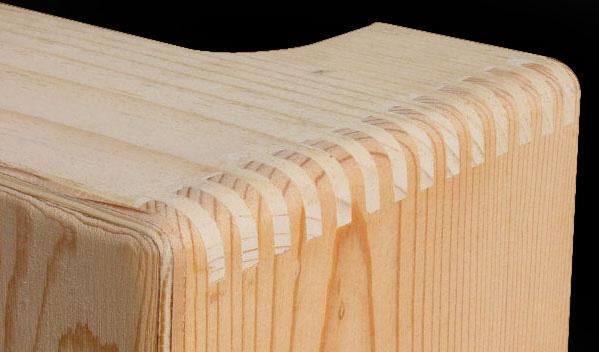
Navigating through the myriad elements of building a 2×10 guitar cabinet, I’ve delved into a step-by-step construction process that marries precision with creativity. Over the years, I’ve refined these instructions, drawing from both practical experience and a deep understanding of the physics underlying acoustic construction. The challenge is as rewarding as the music it amplifies. In this stage, we transition from understanding the theory to manifesting a tangible, resonant cabinet, joining other enthusiasts who prioritize both quality sound and personal craftsmanship.
The journey starts with comprehensive cabinet plans, which guide our efforts in cutting, assembling, and finishing the wood structure. Precise measurements are paramount; they ensure the dimensions align perfectly for optimal soundwave interaction. As we move to speaker installation, understanding speaker impedance is crucial, as mismatched impedance could compromise your sound integrity. We’ll wire the speakers in a way that supports the desired configuration, increasing efficiency without sacrificing tonal quality.
Finally, we’ll seal and finish the cabinet, completing a project that enriches our music-making while deepening our technical knowledge. This craft demands attention to detail but provides immense satisfaction. Moving forward, we will compare our DIY creation to other cabinet configurations, affirming its unique place in your rig.
Comparing 2×10 to Other Cabinet Configurations

Drawing on my extensive experience, I’ve observed how the nuances of speaker configurations can make or break a performance. The dynamic response from your gear can significantly affect the tonal landscape of your music. It’s in these fine differences that a 2×10 excels, especially when pitted against other configurations like the 2×12. While the latter is often celebrated for its fuller bass response and volume, the 2×10 offers a distinct *snappiness* and precise articulation that cuts through a mix with clarity.
Why settle for mediocrity? A quick comparison reveals why a 2×10 might be your ideal choice over larger configurations. The lighter weight and smaller footprint of a 2×10 make it a practical, yet equally potent alternative, especially for players who value *mobility* without sacrificing sound quality. Its unique blend of *punchiness* and *definition* ensures that every note resonates as intended, portraying an artist’s true intent.
In versatile environments, where space and transportability matter, the 2×10 stands out. It brings forth a balanced midrange and sparkling highs that are often more desirable in genres demanding a punchy, agile tone. This isn’t just about preference; it’s about choosing a configuration that aligns with your musical storytelling. By embracing these characteristics, players can unlock new dimensions of their performance, leveraging the 2×10’s strengths to elevate their craft.
Ultimately, these insights are about making an informed choice. From my perspective, the 2×10 epitomizes a harmonious blend of form and function, offering players more than just an alternate option but a pathway to refined expression. As part of your sonic arsenal, it bridges the gap between traditional expectations and modern versatility, ensuring your sound remains true to form and your musical journey unfettered.
FAQs
What is a 2×10 guitar cabinet?
What are the benefits of using a 2×10 cabinet?
How do 2×10 cabinets compare to other sizes?
What should I consider when choosing a 2×10 cabinet?
Can I use a 2×10 cabinet for live performances?
Conclusion
Is the 2×10 guitar cabinet the unsung hero of your rig? Reflecting on my own experiences, I’ve come to appreciate how often the 2×10 cabinet is overlooked yet offers an exceptional blend of tone, portability, and versatility. Its compact design doesn’t compromise on sound quality, making it an ideal choice whether you’re a seasoned professional or an enthusiastic hobbyist.
Throughout this guide, we delved into the key advantages of choosing a 2×10 configuration: it’s not just about adding volume, but enhancing your signature sound with clarity and depth. We’ve examined who benefits most from this setup and identified where to find your perfect match. Moreover, for the creative at heart, building a DIY 2×10 guitar cabinet can become a fulfilling project, aligning with your specific auditory desires.
In conclusion, the decision to embrace a 2×10 guitar amp cabinet could redefine your music experience, offering a sweet spot between other configurations that might seem more enticing at first glance. Remember, sometimes the true gem is hidden in plain sight, waiting to amplify your unique soundscape.
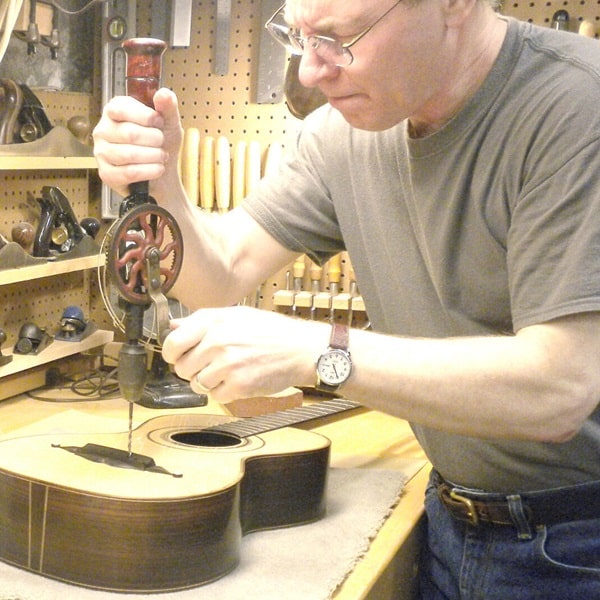
R.M. Mottola, an engineer-turned-luthier, revolutionizes stringed instrument design with his deep focus on acoustics and ergonomics since 1994. As editor of the Savart Journal and a key contributor to American Lutherie, Mottola merges science with artistry in lutherie. He enriches the field with his extensive knowledge, shared through his Liutaio Mottola website, making him a beacon in the world of modern instrument craftsmanship.
